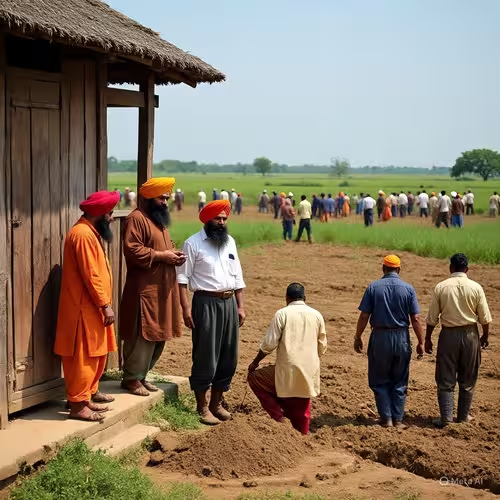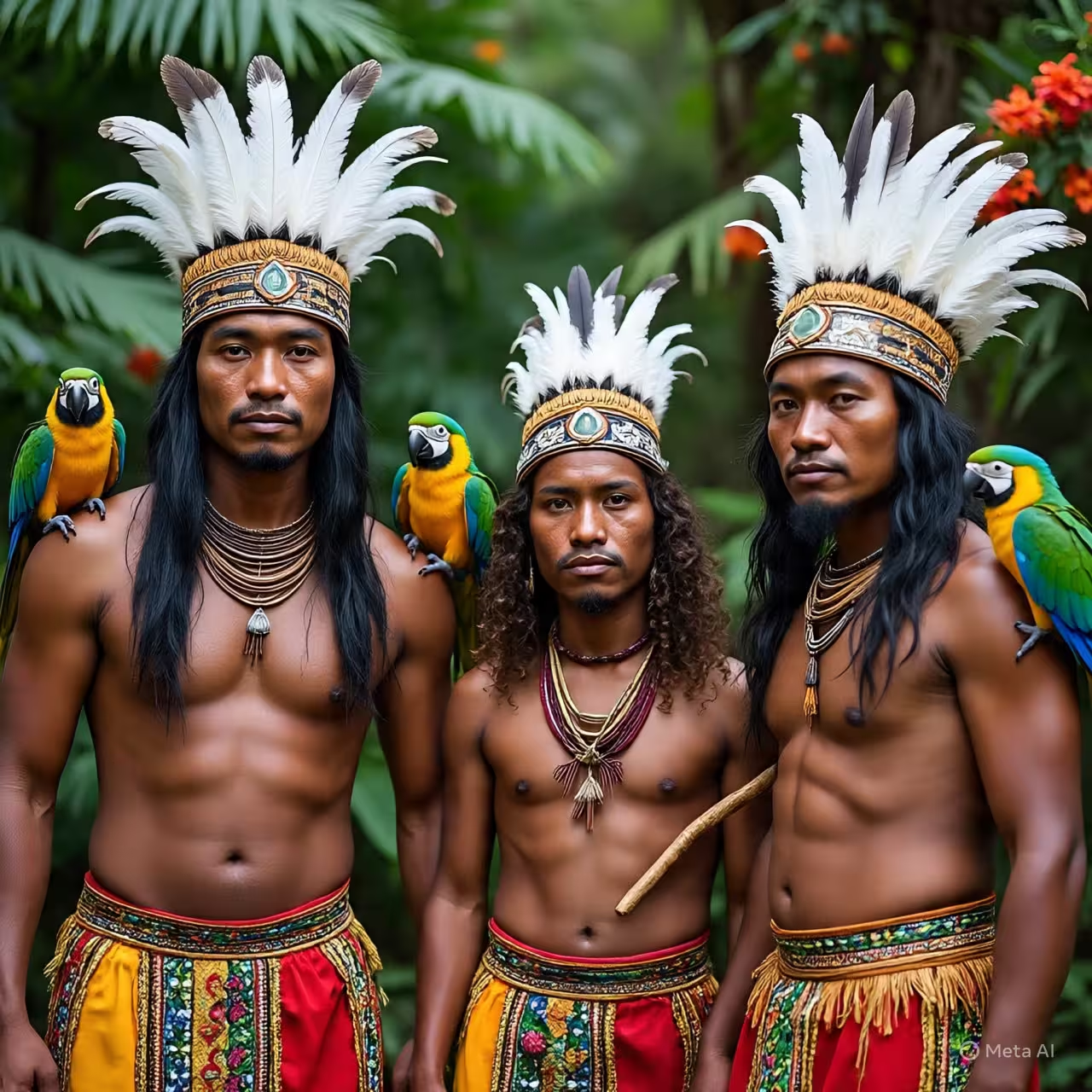
Sikhs in Guyana — A country of Rainforests
Guyana, officially the Co‑operative Republic of Guyana, is a small country on the northern mainland of South America, bordered by Venezuela, Brazil, Suriname, and the Atlantic Ocean. A former Dutch and later British colony (British Guiana), it gained independence in 1966 and became a republic in 1970. Its population is about 800,000, with a mix of Indo‑Guyanese, Afro‑Guyanese, Indigenous Amerindians, and smaller European, Chinese, and Portuguese communities. Guyana is known for its lush rainforests, the mighty Kaieteur Falls, rich biodiversity, sugar and rice production, and more recently, offshore oil discoveries that have transformed its economic prospects. It is the only English‑speaking country in South America, blending Caribbean culture with Amazonian natural beauty.
The Sikh presence in Guyana remains historically modest, more symbolic than congregational (<10 )

Origins & History of Migration
The Indian presence in Guyana traces back to the period between 1838 and 1917, when the British colonial administration brought indentured laborers from India to work on sugar plantations after the abolition of slavery. The majority came from the states of Bihar and Uttar Pradesh, with smaller numbers from southern India and Punjab. Over time, these migrants formed a large community—today making up nearly half of Guyana’s population, predominantly Hindus and Muslims, with Sikhs representing only a tiny minority. While the Sikh footprint in Guyana is modest compared to other Indian communities, their arrival shares the same historical roots of hardship, adaptation, and resilience that shaped the broader Indo‑Guyanese experience.
I have studied Sikh migration across the world, and in almost all cases, the majority of Sikhs migrated under the British from Punjab’s canal colonies. However, in the case of Guyana (then British Guiana), the British recruited indentured labourers through Calcutta, targeting nearby Bihar, Eastern U.P., and parts of Bengal instead.
Kaieteur Falls Guyana
Located in Guyana, South America, Kaieteur Falls is indeed known for its sheer volume of water and is considered one of the most powerful waterfalls in the world. It’s about 226 meters (741 feet) high.
Why No Sikh Migration
1. Recruitment for Guyana was centered in Calcutta (Kolkata)
The indentured labor system for Guyana (then British Guiana) was managed from Calcutta, not from Bombay or Punjab.
Ships to the Caribbean left from Calcutta port because it was logistically closer to the sugar colonies’ main shipping routes.
Recruiters targeted nearby Bihar, Eastern U.P., and parts of Bengal—areas suffering from famine, poverty, and overpopulation—where villagers were more willing to sign indenture contracts.
2. Punjab was under a different recruitment network
Punjab was integrated into the Punjab Canal Colonies economy after the British annexed it in 1849.
Many Punjabis (including Sikhs) could find agricultural work locally in Punjab or enlist in the British Indian Army—so they had less economic pressure to leave for far‑off sugar colonies.
Migration from Punjab under indenture was rare—when Punjabis went abroad, it was often as free migrants to Canada, USA, East Africa, Hong Kong, or Malaya, not under the indentured labor system.
3. Religious & cultural hesitations
Sikhs, and even many Hindus from Punjab, were more resistant to crossing the Kala Pani (black waters) due to religious taboos about sea voyages affecting ritual purity.
Eastern Indian Hindus and Muslims—especially those already near coastal Bengal—had fewer such cultural barriers by the late 1800s.
4. Early indenture agents rarely visited Punjab
The British indenture system was cheap and convenient when focused on Eastern India.
Sending recruiters to Punjab would have been costly, and the British already had a steady supply of laborers from Bihar & U.P., so they saw no need to expand north.
RESULT
Indo‑Guyanese today are about 90% from Bihar & Eastern U.P., mostly Hindu and Muslim.
Very few Punjabis or Sikhs came under indenture to Guyana.
The few Sikhs present likely came later as traders, small businessmen, or via secondary migration from other Caribbean or South American countries.

History of Gurdwara
The Gurudwara Sahib in Georgetown, Guyana, was built with the foundation stone laid by Bhai Seedha Singh in 1901, and the building was completed in 1903. This historic Sikh temple is significant as it’s the oldest Sikh place of worship in Guyana and South America, serving as a spiritual and community hub for the local Sikh community. The Gurudwara Sahib is dedicated to Guru Nanak Dev Ji, the founder of Sikhism, and the ten Sikh Gurus, offering regular services, educational, and cultural events
Demographics Today
Global estimates place the current Sikh population in Guyana at fewer than 10 individuals https://globalsikhiwiki.com.
‘Singh’ remains part of many Guyanese “Hindu” names, but it does not reflect Sikh faith or identity in this context Reddit+2landofsixpeoples.com+2Angelfire+2.
In contrast, there are no accurate census records on Sikhs since they are nearly nonexistent as a distinct religious group in Guyana today.
Sikh Institutions
The main Sikh institution in Guyana is the Gurudwara Sahib in Georgetown, originally built in the early 1900s, with foundation stone laid in 1901 and completed by 1903 .
It is believed to be the oldest Sikh place of worship in South America, serving a tiny Sikh body and more as a cultural/heritage site than an active congregation
Regular Punjabi and English prayers, kirtan, langar, and community events are held there; open daily from 7 am to 8 pm
Religious Climate in Guyana
Guyana is constitutionally secular and scores 4/4 on religious freedom. Interfaith harmony is generally high, with Hindus, Muslims, Christians, and other groups celebrating each other’s festivals Reddit.
While Sikh representation is minimal, minority religions like Rastafarians and Bahá’ís are acknowledged under “other religions” (< 1%) Wikipedia.
A Reddit discussion notes:
“Very tolerant of religions… a number of other minor religions and beliefs e.g. … Sikhs … Anyone is usually welcome at a religious festival”.


Final Thoughts of Sikhs Presence in Guyana
The Sikh presence in Guyana is very modest and largely historical, with the Gurudwara serving as a symbolic site rather than a hub of a large, active community.
Most Guyanese with the surname Singh are Hindus, reflecting their roots in northern India—not Sikh heritage.
Overall, Guyana values religious diversity and allows space for Sikhs, but the community remains tiny and not formally visible in population statistics.
Notable Sikhs and Families
Few early Sikh settlers: A 1960s-era account mentions only three Punjabi men in Guyana, all recent arrivals, with none identifying as Sikh until births in the 1960s – the first registered Sikh individuals in the country SikhNet
Sikh migration to the Caribbean: As part of the broader indenture system (1838–1917), a tiny fraction of migrants were Sikhs; subsequent waves from the 1920s onward included professionals and traders, though they remained very few in comparison to Hindus and Muslims
Broader Cultural Context & Interfaith Climate
The surname Singh is widespread across Indo-Guyanese communities but is rarely an indicator of Sikh faith there. Rather, it’s a common North Indian Hindu surname, especially among people with roots in Bihar and Uttar Pradesh
One Redditor comments on the inclusive and respectful environment:
“We are very tolerant of religions… a number of other minor religions and beliefs e.g. … Sikhs …Anyone is usually welcome at a religious festival e.g. a Puja… or for Friday Mosque” Reddit.
Another thread highlights how coexistence across faiths is normal:
“My family/ extended family has Hindu, Christian, Muslim and Atheist people in it. It’s never has been a big deal”














